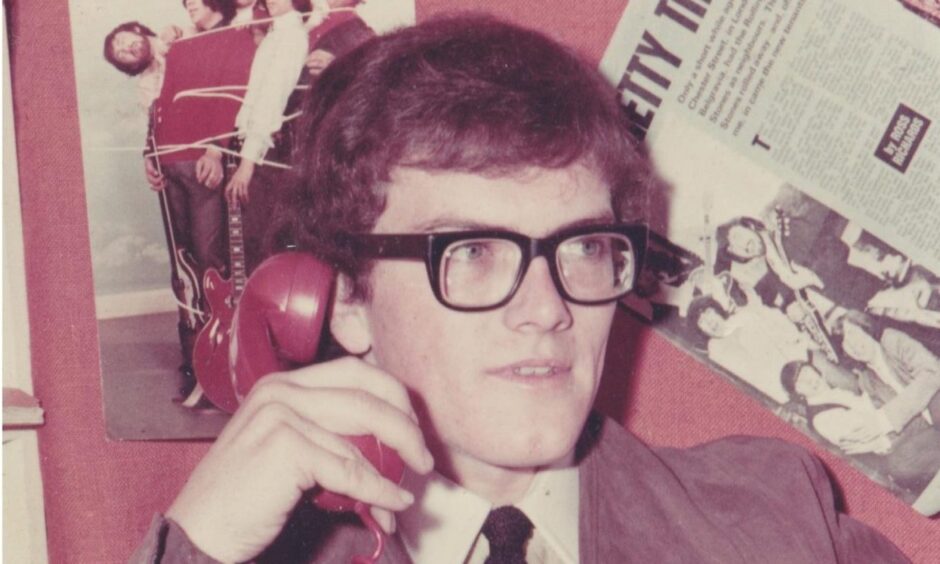
Harry Buckle grew up dreaming of being James Bond but became a pop journalist after some career advice from 007 author Ian Fleming.
Harry then chronicled the Swinging Sixties for Jackie and his weekly pop column, under the pseudonym of Pete Lennon, left millions of teenagers shaken and stirred.
Jackie was published by DC Thomson in Dundee 12 weeks before hitting the shelves, which meant Harry using his judgement to predict that a song would become a hit.
So Harry, wearing his Michael Caine-style specs on his nose, would try to predict the next big thing.
He was usually right.
On Her Majesty’s Secret Service…
“Much to my mum and dad’s disappointment, university didn’t beckon, and I left school soon after my 16th birthday but, luckily for me, my aunt became involved,” said Harry.
“Determined I get a proper job, she set up a meeting with James Bond author Ian Fleming, whom she’d known during the war – during which she’d been in the Special Operations Executive, which was part of the Secret Service.
“She often flew clandestinely in and out of Scandinavia from RAF Leuchars.
“Prior to his Bond books, and then the films really taking off, Fleming had been foreign manager of Kemsley News Group, whose flagship newspaper was The Sunday Times.
“He and my aunt decided that with my lack of any decent language qualifications – except English – I’d stand no chance with the Secret Service, which, as I was already an avid Bond fan, was a tad disappointing.
“But as he was leaving he scribbled a phone number on a card and said: ‘Ring this chap, mention my name and he’ll hopefully get you an interview with a newspaper publisher’.
“I made the call and a week or so later, after some extensive interviews in the Fetter Lane offices of DC Thomson, in October 1962, I was engaged as an editorial trainee.”
Harry started in Fleet Street on £6 a week.
He said: “Day by day I was encouraged to find items of Scottish interest in the London and European papers we had in the office and rewrite them for possible use in Scotland.
“In 1963 Allen McDougall, who worked on girls’ comics Romeo and Cherie in Dundee, came to London, and, as a local with some interested connections to the music scene, I was able to show him around the pubs and clubs.
“On his return to Scots HQ he arranged with his boss, Gordon Small, that, as well as re-writing general Scots content, I was well placed to chase up the record companies and artist managers for stories and photos.”
Harry interviewed John Lennon for Romeo in June 1963 and the musical side of the job started to get busier and busier as these relationships started to develop.
“I was asked to get photos from the major record companies or take staff photographer Eric Huxtable to do a photo shoot in both colour and black and white with The Kinks, The Zombies, the Dave Clark Five and other top pop stars,” he said.
“With Cherie and Romeo and DC Thomson’s other teenage output being mainly black and white it soon became clear they had some secret plans for a new magazine.”
They did.
Jackie launched 60 years ago and offered readers’ letters, beauty tips, picture strip stories, fashion, colour pop pin-ups and its hugely-influential agony aunt’s page.
It wasn’t an instant success.
Harry was summoned to Dundee when sales slipped and returned copies started to pile up after the initial euphoria of Jackie’s launch died down.
“Allen and Gordon encouraged me to speak my mind directly to Mr Thomson,” he said.
“My point was, teenage fad fashions and musical trends moved fast – and due to the 12-week advance printing deadline – much of the content in Jackie was now old news.
“Not only that but just because they were top of the pop charts didn’t mean that Val Doonican, Frankie Vaughan, Frank Sinatra or Andy Williams were of the slightest interest to our target market of 12 to 20-year-olds.”
Harry’s “junior views” confirmed what research was showing and he was given a “cupboard sized office” at 185 Fleet Street with a message from Gordon Small: “Get on with delivering the hits to us before they are hits!”
Harry’s transformation was almost complete.
Before he got the sleeper train back to London from his Dundee meeting Gordon said: “Let’s get some photos of you to put with your new byline of Pete Lennon.”
Harry said: “The use of my photo – 10 times or more in some editions – caused me endless problems.
“Gangs of fans soon started to lipstick ‘We love Pete’ messages on my aged red Triumph Spitfire sports car, and, to the dismay of London manager Archie Hamilton, on and around the front door of 185 Fleet Street.
“Most of the bands and solo singers in and around the charts who’d known me since my Romeo and Cherie days were greatly amused by my fan following and, yes, they now called me Pete.
“With the car covered in pink hearts and scrawls tending to attract even more interest, eventually the ‘commissionaires’ at the BBC Top of the Pops studios kindly let me park every week in the patrolled place reserved for the super stars.”
Harry predicted – years before they succeeded – that both David Bowie and David Essex would have hits but he was also sometimes wrong.
He became convinced Tommy Quickly would make the big time after being signed by Beatles manager Brian Epstein.
He sadly sank without trace.
Harry Buckle went from Fleet Street to Eurovision…
Harry’s life was to become something of an endless whirl as he chronicled the biggest stars of the decade, including charting the rise and fall of The Beatles.
How did Jackie become so popular?
“When Jackie launched in January 1964, apart from Beatlemania and some breathless coverage of Mary Quant’s Chelsea-style mini skirt fashion, there was very little to interest the newly discovered teenage tribe in the national press,” he said.
“Jackie became the girl’s – often secret – best friend.
“Secondly, there was almost no pop music on the radio.
“No commercial radio and BBC Radio One didn’t start until September 1967.
“So, again, Jackie was that vital source of music news about your pop favourites.”
Thirdly, there was the explosion that was pirate radio in 1964.
“The pirate DJs embraced the Jackie generation and Jackie embraced the pirates, with Gordon dispatching me to take long, salty, scary trips offshore to various of the ships with our photographer,” he said.
“The DJ’s reciprocated by daily playing requests for ‘all those Jackie fans out there’.”
Sixty years on from Jackie magazine, I have concluded that, as well as providing so much enjoyment, pop music has influenced history and changed the world.”
Harry Buckle
The national press, radio, TV and newsagents shelves were awash with pop music and pop culture by 1970, when Harry left Jackie after six years.
Harry said: “After Jackie, but still using my pop picking skills with the enthusiasm of youth but no money, I started my own music company.
“Over the next 30 years we had more than 100 Top of the Pops hits worldwide, won Grammys and even won the Eurovision Song Contest for Norway in 1985!”
In 2000 he sold his companies after 50 years and spent a decade lecturing in Asia on “intellectual copyright” where he met his future wife who was a Thai chef.
Showing no signs of slowing down aged 79, Harry, who spends most of the year in Thailand, has also written a series of “amiable thrillers” which have become best sellers.
The 60th anniversary of Jackie prompted Harry to dust off his old photos and his memories of a period in his life he is incredibly proud of.
He said: “Sixty years on from Jackie magazine, I have concluded that, as well as providing so much enjoyment, pop music has influenced history and changed the world.
“Back in the day, a Jackie girl said to me: ‘Sometimes music is my only friend’.
“Those never-forgotten words are still so true for so many today – making my ‘lucky’ life’s work in music feel just that little bit special.”

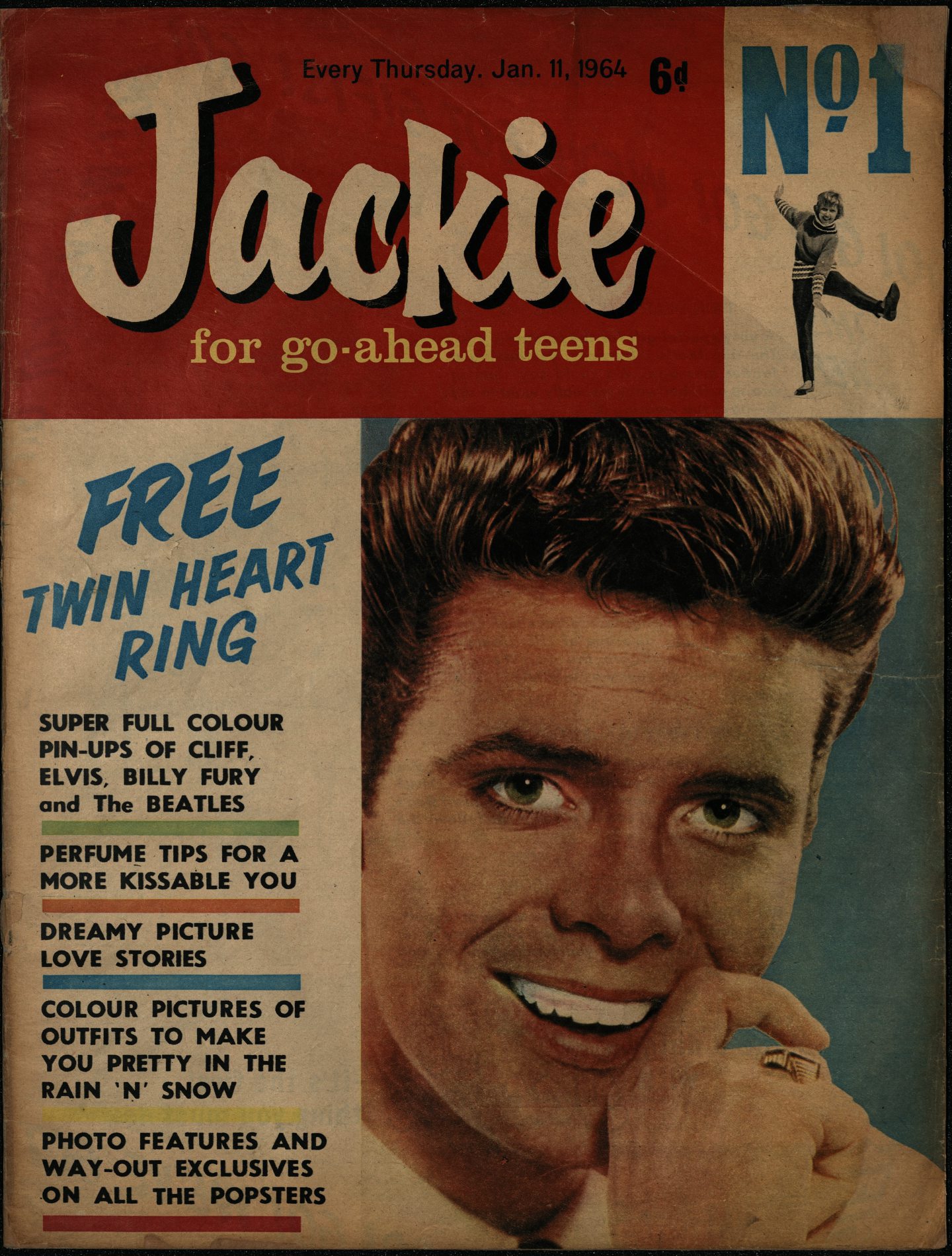
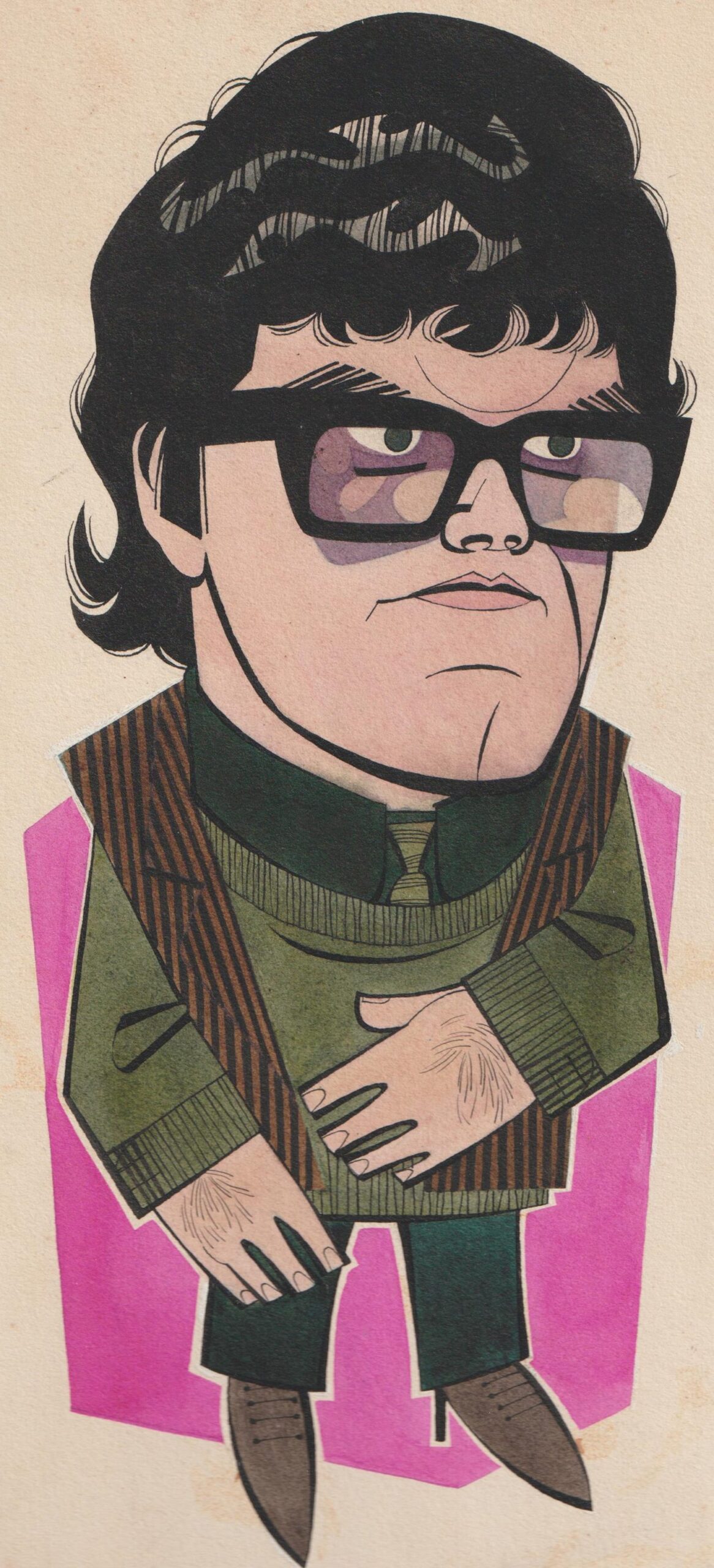
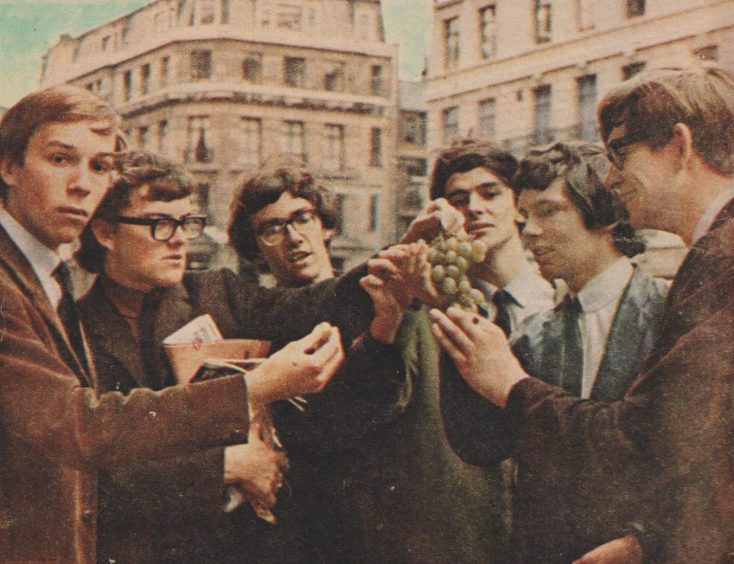
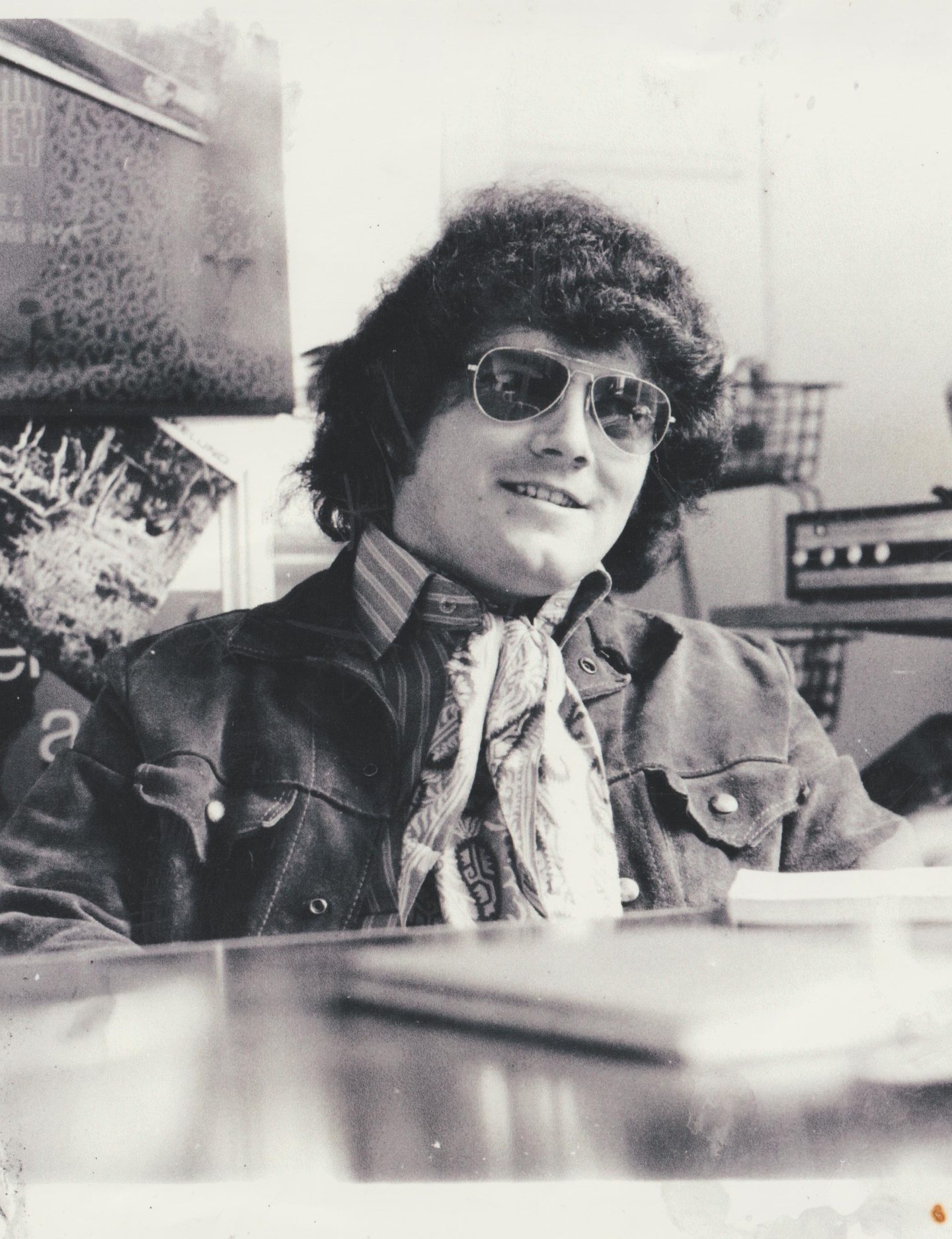
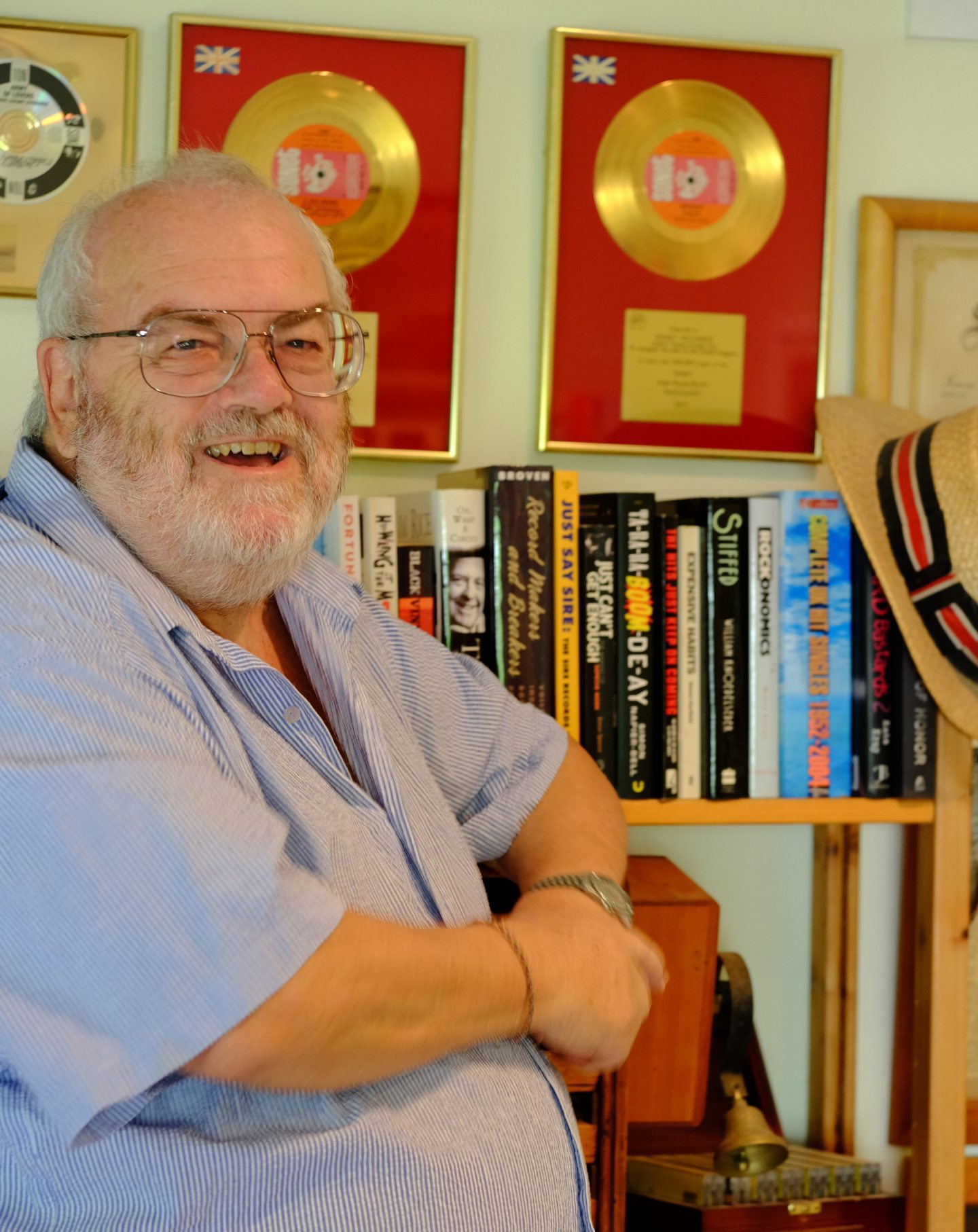
Conversation